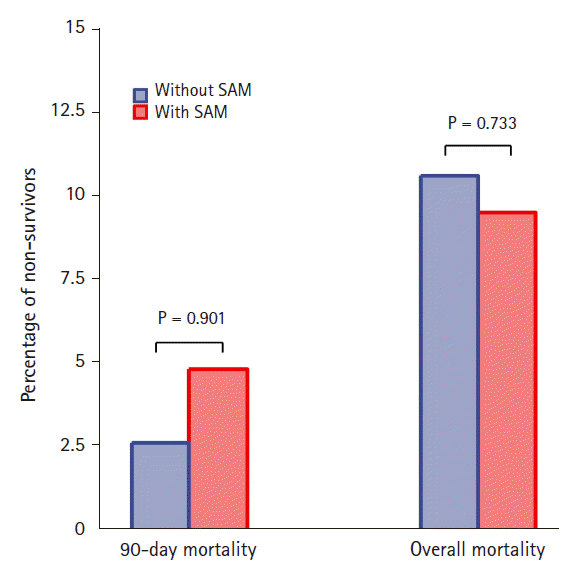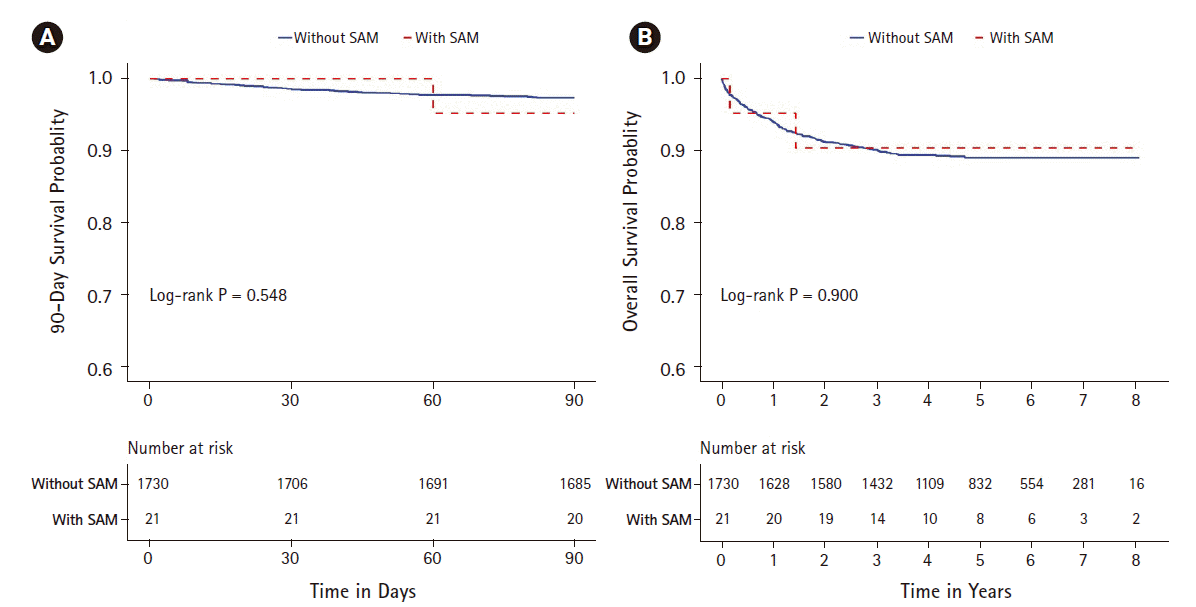1. Manabe S, Kasegawa H, Arai H, Takanashi S. Management of systolic anterior motion of the mitral valve: a mechanism-based approach. Gen Thorac Cardiovasc Surg. 2018; 66:379–89.
2. Moon YJ, Park JH, Oh J, Lee S, Hwang GS. Harmful effect of epinephrine on postreperfusion syndrome in an elderly liver transplantation recipient with sigmoid ventricular septum: a case report. Medicine (Baltimore). 2016; 95:e4394.
3. Pearson AC, Pasierski TJ, Orsinelli DA, Gray P, Huschart K. Systolic anterior motion of the mitral chordae tendineae: prevalence and clinical and Doppler-echocardiographic features. Am Heart J. 1996; 131:748–53.
4. Moon KW. R statistics and graphs for medical papers. Seoul: Hannaare;2015.
5. Therneau TM. A Package for survival analysis in S. R package version 2.37-7. 2014. [cited 2019 Apr 27]. Available from: http://CRAN.R-project.org/package=survival.
6. Kwon HM, Hwang GS. Cardiovascular dysfunction and liver transplantation. Korean J Anesthesiol. 2018; 71:85–91.
7. Ramond MJ, Comoy E, Lebrec D. Alterations in isoprenaline sensitivity in patients with cirrhosis: evidence of abnormality of the sympathetic nervous activity. Br J Clin Pharmacol. 1986; 21:191–6.
8. Wachsberg RH. Cardiac response to exercise in cirrhosis. Gut. 2002; 51:755. author reply 755.
9. Wong F, Girgrah N, Graba J, Allidina Y, Liu P, Blendis L. The cardiac response to exercise in cirrhosis. Gut. 2001; 49:268–75.
10. Møller S, Henriksen JH. Cirrhotic cardiomyopathy: a pathophysiological review of circulatory dysfunction in liver disease. Heart. 2002; 87:9–15.
11. Møller S, Henriksen JH. Cirrhotic cardiomyopathy. J Hepatol. 2010; 53:179–90.
12. Mittal C, Qureshi W, Singla S, Ahmad U, Huang MA. Pre-transplant left ventricular diastolic dysfunction is associated with post transplant acute graft rejection and graft failure. Dig Dis Sci. 2014; 59:674–80.
13. Harley ID, Jones EF, Liu G, McCall PR, McNicol PL. Orthotopic liver transplantation in two patients with hypertrophic obstructive cardiomyopathy. Br J Anaesth. 1996; 77:675–7.
14. Essandoh M, Otey AJ, Dalia A, Dewhirst E, Springer A, Henry M. Refractory hypotension after liver allograft reperfusion: a case of dynamic left ventricular outflow tract obstruction. Front Med (Lausanne). 2016; 3:3.
15. Lim YC, Doblar DD, Frenette L, Fan PH, Poplawski S, Nanda NC. Intraoperative transesophageal echocardiography in orthotopic liver transplantation in a patient with hypertrophic cardiomyopathy. J Clin Anesth. 1995; 7:245–9.







 PDF
PDF Citation
Citation Print
Print




 XML Download
XML Download